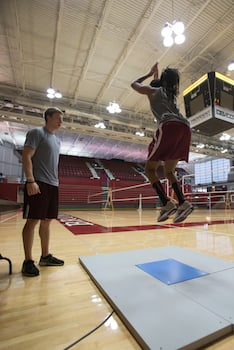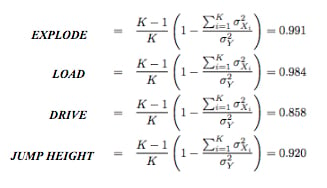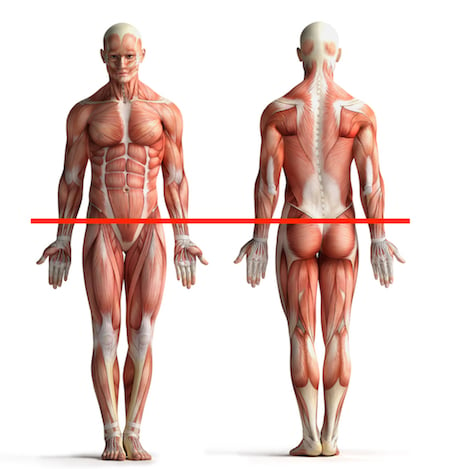
The vertical jump assessment is one of the most commonly used tests in the sporting realm. Thanks to gravity, vertical forces can be used to explain a multitude of athletic movements utilizing both qualitative and quantitative measures from jump tests. This testing can be performed in a variety of ways with a variety of devices, but force plates are considered to be the gold standard. Research grade force plates not only are highly precise and reliable pieces of hardware, but can also measure countless different variables of force and time when compared to a contact mat or Vertec. Up until recently, this technology has primarily been found in a laboratory setting, but as more and more individuals are getting access to these devices, more and more questions arise:
How often should we assess?
What are the variables we should look at?
How does fatigue affect assessments?
How do we interpret the data?
Do we need to standardize testing?
Should we utilize arm swing or not?
Sparta utilizes the vertical jump as one of our key assessments when evaluating movement, and in turn are often asked to answer these questions for current and potential partners. A recent discussion on social media sparked a more public conversation on the potential use of arm swing in jump testing. So, should we utilize arm swing, or not?
The first task when it comes to any measuring is a concept very near and dear to our hearts: reliability. Reliability is often overlooked because it isn’t sexy, but is it of the utmost importance. In the literature, vertical jump testing is often utilized without arm swing to help control for the potential variability it introduces which may decrease reliability. With a force plate capable of measuring data at 500 times per second, we must first define which of these data we are going to evaluate the reliability of. The width of data that can be collected utilizing this technology is both a blessing and a curse. Utilizing measures from specific predetermined time points (50ms) or when specific threshold are reached (peak/max) are much more common in the literature than looking at averages over time. These measures are not only purely quantitative, but because they are taken at one specific time point, by nature they are much more susceptible to reliability issues. To control for this, familiarization sessions often need to be performed to get individuals comfortable with the setup and technique of the assessment required in order to ensure reliable data.

The standard cutoffs would suggest that the internal consistency for EXPLODE, LOAD, and JUMP HEIGHT are excellent and the internal consistency for DRIVE is very good (near excellent).
The variables of LOAD, EXPLODE, and DRIVE as represented in an individual’s Movement Signature are not taken from one time point but are averages over the different phases of movement. This not only reiterates our goal to evaluate movement strategy, but controls for the “variable” nature of utilizing arm swing. Analysis of our data shows that the internal consistency for LOAD and EXPLODE are excellent and that DRIVE is very good (near excellent). Furthermore, by averaging 3 out of 6 jumps performed in the Sparta Scan reliability is improved, as averaging can explain 90% of the variability within the assessment. Finally, the data is then normalized and represented as T-Scores relative to our database, utilizing means and standard deviations to identify meaningful change. Reliability is an extremely important concept. It is also important to understand that with the abundance of data points that can be collected with today’s technology, they are not all created equal. For example many “GPS” units can measure distance travelled, heart rate, and decelerations; it is hard to state whether any one product is reliable or unreliable without some further investigation into each of the different variables collected.
It has been noted that utilizing arm swing may be best served with jump-specific populations, however we have also found the vertical jump assessment variables to be homoscedastic: that is, being a skilled jumper (basketball/volleyball) doesn’t make for a better force producer. Skilled jumpers may show a higher jump height, but when we analyze that individuals Movement Signature the advantage is no longer there. Our assessment is not without standardization protocols, we simply choose to standardize by utilizing methods other than altering the individual’s natural movement: utilizing research grade hardware, analyzing only reliable variables, averaging results, standardizing warm up, and utilizing normative data to interpret results. Standardization is often bastardized as it decreases the “flexibility” of testing, however it is the best way to ensure the consistency and discipline required to collect reliable data.

People often believe we have a lower body bias because we utilize the vertical jump as a primary assessment. Because of how we were educated, most of us as coaches in reality fall victim to a bias that we can simply chop the body in half and evaluate or train these segments individually. Unfortunately movement, and in turn the system of nerves, tendons, muscles, fascia, and other structures that support and create movement don’t adhere the bodybuilding rule of the upper/lower split. We have historically cut the body into different pieces or segments primarily to simplify, and improve comprehension when teaching how the human body functions. This has changed our perception and ability to understand holistic human movement to a simpler to understand yet highly inaccurate joint by joint approach… where everything (in theory) occurs in isolation. Jump tests are often used with the intent to measure pure lower body metrics such as strength or power; unfortunately (whether we utilize arm swing or not) this is a gross oversimplification of what is actually happening during these movements. Just as categorizing movements purely as “push” or “pull,” attempting to isolate tests of lower or upper body function while great in theory is largely inaccurate.
One common argument against the use of arm swing, is that it has been shown to increase or affect performance (most notably jump height) when compared to not utilizing an arm swing. While this effect is real, an alternate view-point is just as valid: not utilizing arm swing shows to decrease or affect vertical jump performance. From a ecological validity standpoint, the majority of dynamic movements not only don’t restrict upper body movement, but require the arms (and the trunk, head, and neck) to be incorporated in order to enhance performance. The vertical jump with arm swing is a much more natural athletic movement. Restricting the upper body will not only affect quantitative measures like jump height, but alter an individual’s movement strategy as well. If the goal is to assess how (qualitative) and not just how much (quantitative), removing arm swing with hopes to decrease variability will also decrease the validity of the test as an assessment of an individual’s movement solution.
In order for movement to occur, individuals apply force into the ground, and the subsequent ground reaction forces propel the body in the desired direction. These forces travel down and up the kinetic chain as athletes sequence through different phases of a movement. The magnitude and timing of these force are responsible for the basketball athlete jumping through the roof, just as they are for the baseball pitcher’s blazing fastball. If you simply ask an athlete to jump as high as they can, they are going to use their upper body to assist their performance. Now watch them jump in their sport, sprint, or decelerate… The more we restrict natural movements during assessments the more unnatural the movement becomes. Tests such as squat jump, isometric mid-thigh pull, and countermovement jump without arm swing are largely used to measured quantitative outputs at specific time points (peak force, peak power), just as 1RM testing is used to evaluate strength. Because the technique is restricted, attempts to evaluate movement quality in terms of sequencing and timing (strategy) of force production are extremely limited.

More important than whether to utilize arm swing or not, is to define the question you are trying to answer or problem you are trying to solve. Utilizing the vertical jump with arm swing gives us qualitative assessment of an individual’s natural movement solution. The variables we utilize have been shown to be reliable and valid, and perhaps just as important, the testing is practical and actionable. The best way to make sure your jump testing is useless is to change the movement, protocol, and variables measured as often as possible. While this may fulfill your curiosity, it will do so at the cost of fulfilling your obligation to your athletes, patients, team, or organization.